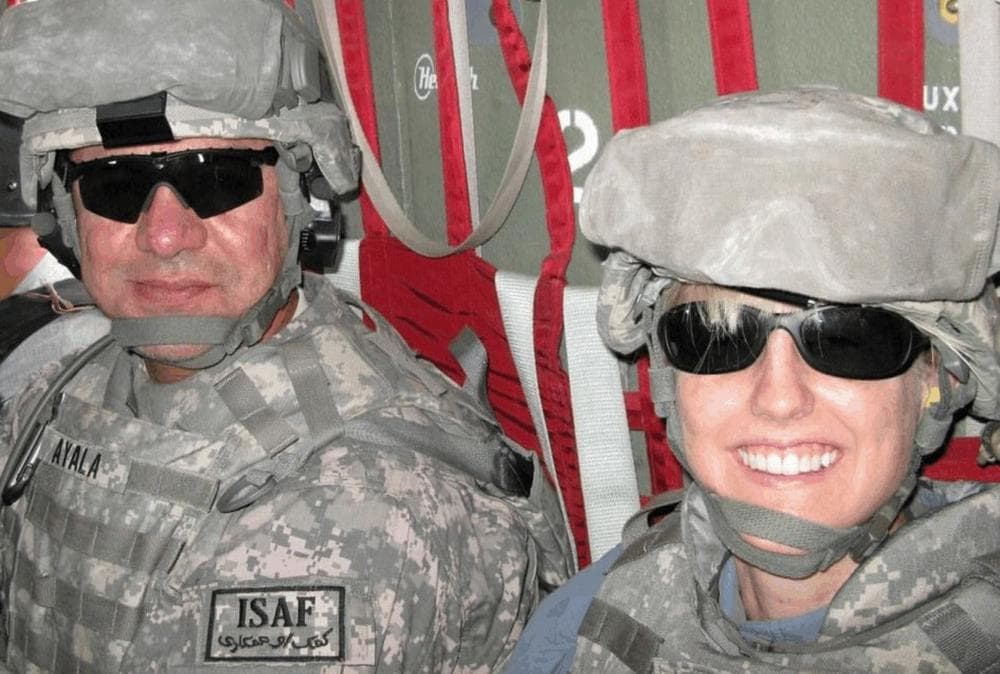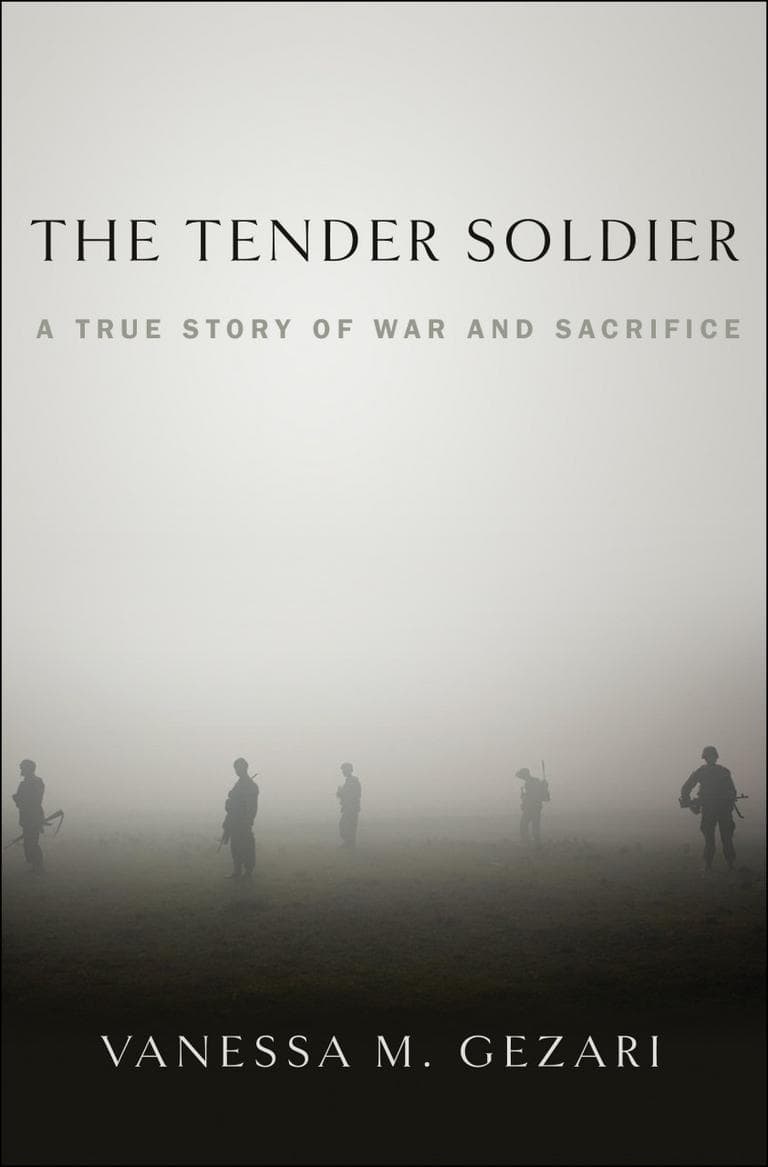Advertisement
'The Tender Soldier' Tells Story Of Anthropologist Killed In Afghanistan
Resume
On November 4, 2008, Paula Loyd, an anthropologist embedded with U.S. troops in Afghanistan was killed when an Afghan man doused her with fuel and set her on fire.
A former Army Ranger working with Loyd, Don Ayala, handcuffed the Afghan, then shot and killed him.
It was the worst outcome imaginable for the so called human terrain teams, and the military push for making troops more culturally conscious.
Vanessa Gezari tells the story in her new book "The Tender Soldier: A True Story of War and Sacrifice."
It, Gezari also tells the history of anthropology and war, from Lawrence of Arabia and Margaret Mead to Montgomery McFate.
McFate was the child of San Francisco house boat hippies who asked, "Why can't anthropologists study war?" She helped to start the modern day program.
Gezari says the program — called Human Terrain System — is problematic.
"The time to learn about people in the places we're fighting is not in the middle of a war," Gezari told Here & Now.
Book Excerpt: 'The Tender Soldier'

Sometimes the events of a single day tell the story of a war. On November 4, 2008, voters in the United States elected Barack Obama president, laying the groundwork for an expanded counterinsurgency campaign in Afghanistan. On the same day, in the tawny flatlands west of Kandahar, a group of American civilians and soldiers set out on a hopeful mission that would change their lives and those of the Afghans they met forever. Among them was a brave and gentle woman with a Wellesley degree, a soldier’s devotion to her country, and a fierce curiosity about the world. Theirs was an anthropological undertaking, matching the audacity of Obama, an anthropologist’s son.
This book tells the story of what happened that day, and of the conception and rapid early growth of the Human Terrain System, a central tool in what was supposed to be a more culturally conscious way of war. It traces the first four years of this experiment, from its beginnings as a cultural knowledge database to fight homemade bombs in Iraq through its multimillion-dollar expansion. It follows the program through the height of American involvement in Afghanistan in 2010, when one hundred thousand U.S. troops were stationed there along with more than twenty Human Terrain Teams. For much of this period, the project’s senior social scientist was an anthropologist-cum-war-theorist raised in a radical squatters community in Marin County, California, and educated at Ivy League schools. She would become the most flamboyant evangelist for an evolving form of battlefield information known as cultural intelligence. Its director was a scrappy and unconventional career soldier who believed the Army could be cured of its ethnocentrism, and that this goal justified almost any means taken to achieve it. Yet he himself embodied a profoundly American worldview: that every problem has a solution, and that Americans can find it.

The Human Terrain System was born in the shadows of a revolution within an Army that had tried to bury the painful lessons of Vietnam. In Iraq and Afghanistan, soldiers revived the low-tech practices of counterinsurgency, emphasizing the value of human contact for intelligence gathering, political persuasion, and targeted killing. The Human Terrain System was the Army’s most ambitious attempt in three decades to bring social science knowledge to the battlefield, but it was unwelcome to some American anthropologists, who believed their discipline had too often been hijacked for imperialist ends. They were right, but so was the Army.
In Afghanistan, context makes intelligence make sense. American soldiers could not possibly know where to build a school or vet tips about who was the enemy without knowing which tribe their informant belonged to, who his rivals and relatives were, where he lived, how he had come to live there, and a thousand other details that anthropologists or journalists might collect but that soldiers rarely thought to ask about. Yet here lay a difficulty. Cultural understanding was a tool that could be used for saving or for killing, like the knife that cuts one way in the hands of a surgeon and another in the grip of a murderer. The Human Terrain System wasn’t designed to tell the military who to kill. But a child could see that who to kill and who to save were questions that answered each other.
There are two kinds of military cultural knowledge. The first kind gives rise to directives that soldiers in Afghanistan should avoid showing the soles of their feet; that they should use only their right hands for eating; that they should accept tea when it is offered; and that men should refrain from searching women. The other kind of cultural knowledge, sometimes known as cultural intelligence, is what the military needs to make smart decisions about which local leaders to support, who to do business with, where to dig wells and build clinics, who to detain and kill, and when to disengage. Cultural intelligence is the textured sense of a place that helps soldiers understand how tribal systems work; how criminals, drug dealers, and militants are connected; the role of marriage in cementing business relationships and political alliances; and the way money and power move between families and villages. It was important for soldiers to understand Afghan culture so they wouldn’t needlessly offend people. But for a force with a mission to strengthen local government and kill and capture terrorists in a place with no working justice mechanisms, it was crucial, too, that Americans make informed decisions about who to protect, which lives to ruin, and which lives to take. They routinely didn’t.
The Human Terrain System was developed to help address these problems. What follows is the story of a hopeful moment when America, in the midst of two wars, sought to change the way it fights, and of a remarkable woman and her teammates, who risked everything to save the Army from itself.
Excerpted from the book THE TENDER SOLDIER by Vanessa Gezari. Copyright © 2013 by Vanessa Gezari. Reprinted with permission of Simon & Schuster, Inc.
Guest
- Vanessa Gezari, author of "The Tender Soldier." She tweets @vanessagezari.
This segment aired on September 4, 2013.